| Veterans' / Armistice Day (11.11.11.) & the First World War |
last modified: |
Veterans' Day began as Armistice Day, in observance of the Armistice, declared at 11 o'clock on 11 November 1918 ("11.11.11"), that brought an end to battlefield hostilities in World War I (1914-1918, American involvement 1917-1918).
An "armistice" is a formal, mutual cessastion of combat that is intended to be long-term, as opposed to temporary "cease-fires" and "truces". The German word is "Waffenstillstand". Its three parts are all simple German words, and thus the concept can be grasped, at least in concrete terms, by a German child: Waffe (weapon) + still (quiet) + stand (stand, status) : "weapons stand still". That is what the Latin words that make up the English term also mean, but no child and few adults are aware of that: armi- + stice (arma [arms, weapons] + -stitum [stand still]). Related words in English are "solstice" (the start of summer in late June, or the start of winter in late December, when the sun appears to stand still), and "interstice" (a gap of time or space that is placed between [inter-] other segments).
Back to wars and arms and weapons. In the German word "Waffenstillstand", the word for "arms" or "weapons" is not, unlike in English, also the same word for the limbs on the upper parts of our bodies (and the German word for tree limb is not the same as the word for bodily limbs). So in German there can be no bumper-sticker political humor or sarcasm about the right to bear arms and the right to arm bears, or losing putting down one's arms and thus living to stand further on one's legs. There can be humor about war, usuallymorbid humor, but that topic isn't part of this presentation.
Basics about WWI, whether actual facts or widespread perceptions:
1. The chief hostile powers in Europe were Britain, France, Russia, and Italy (and then the US) on one side, and Germany and the Austro-Hungarian Empire on the other. In WWI, Italy and Japan were allies, NOT enemies, of Britain, France, and Russia; in WWII Italy and Japan were allies of the Nazi Reich, which included both Germany and Austria, as well as other countries and territories, whether willing or no.
2. WWI came about in a semi-accidental, semi-unavoidable way, as a series of incidents and provocations triggered steps in a complex network of treaty arrangements, some of which involved secret clauses, as well as contradictory terms.
3. Mass implementation of large-scale technology (tanks, airplanes, rapid-fire rifles, poison gas, media shaping mass public opinion) was a feature of WWI. Almost all war involves technology, but many at the time sense that in its extensive use of technology to inflict mass rather than individual injury, WWI was different from most earlier wars, with the possible exception of the American Civil War (1861-65) and the Franco-Prussian War (1870-1871), which somewhat served as "laboratories" for WWI.
4. Battlefield casualties were enormous, as the were in WWII. Civilian casualties were significant, but not nearly as horrible as in WWII. Some staistics (remember that country populations were considerably lower then):
|
country |
1914 pop. (millions) |
military deaths |
civilian deaths |
deaths as % of population |
military wounded |
|
Allies (larger populations / larger casualty figures) |
|||||
|
UK |
45.4 |
885,138 |
109,000 |
2.19% |
1,663,435 |
|
Japan |
53.6 |
415 |
0 |
0% |
907 |
|
Belgium |
7.4 |
58,637 |
62,000 |
1.63% |
44,686 |
|
France |
39.6 |
1,397,800 |
300,000 |
4.29% |
4,266,000 |
|
Italy |
35.6 |
651,000 |
589,000 |
3.48% |
953,886 |
|
Russia |
175.1 |
1,811,000 |
1,500,000 |
1.89% |
4,950,000 |
|
Romania |
7.5 |
250,000 |
430,000 |
9.07% |
120,000 |
|
Serbia |
4.5 |
275,000 |
450,000 |
16.11% |
133,148 |
|
US |
92 |
116,708 |
757 |
0.13% |
205,690 |
|
Central Powers (all) |
|||||
|
Austria-Hungary |
51.4 |
1,100,000 |
467,000 |
3.05% |
3,620,000 |
|
Bulgaria |
5.5 |
87,500 |
100,000 |
3.41% |
152,390 |
|
Germany |
64.9 |
2,050,897 |
426,000 |
3.82% |
4,247,143 |
|
Ottoman Empire |
21.3 |
771,844 |
2,150,000 |
13.72% |
400,000 |
Note: 1) the low percentage of US casualties, the high percentage of casualties in some of the smaller countries, the excess of civilian casualties over military in some countries, and the rounding of figures is some cells (indicating a record-keeping system overwhelmed by bodies); 2) Military deaths would largely have been males; thus in countries like France, Italy, Austria-Hungary, and Germany, not "merely" ~4% of males died, but almost 8%. Since these deaths would have been concentrated within the age range of 18-35, the 8% should be doubled to perhaps 16%. In other words, a huge portion of the laboring and breeding population was killed. And yet the same countries were able to repopulate and re-arm for a similar round of casualties in WWII, just a generation later.
(Other US war casualties: Revolutionary War - 4,435; War of 1812 - 2,260; Mexican War - 1,733; Civil War - Union 140,415, Confederacy 74,524; Spanish-American War - 385; WWII - 292,131; Korean War - 33,667; Vietnam War - 47,393; Persian Gulf War - 148; Iraq/Afghanistan - ~6,000
In wars up through WWI, military deaths related to disease often exceeded combat casualties, sometimes by a factor of two.
Source (except Iraq/Afghanistan); World Almanac, 2000
source (link valid 11/2010): http://en.wikipedia.org/wiki/World_War_I_casualties
Individual battles (or campaigns on the same small territory) could exact hundreds of thousands of casualties. In the Battle of Verdun (21 February - 18 December 1916), one-quarter of a million soldiers died (163,000 French, 143,000 German). The memorial ossuary (bone-house) there contains the remains of 130,00 unknown French and German soldiers who fell at Verdun.
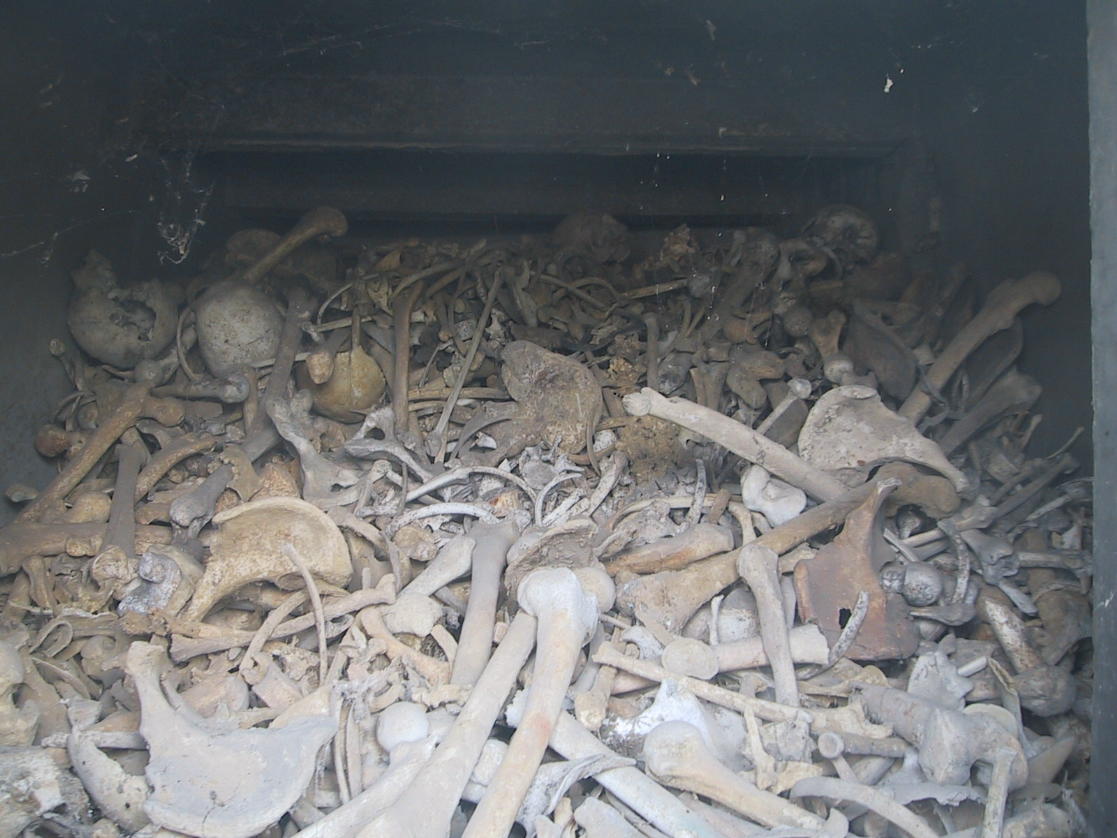
Source: http://www.pigstrough.co.uk/ww1/verdun.htm
Similarly horrendous was the Battle of the Somme (1916). On its first day alone, the British lost 19,240 dead.Total casualties, both side, dead and wounded, were 1.2 million men.
source: http://www.worldwar1.com/sfsomme.htm
5. In the public mind, in soldiers' memories, in the literature, poetry, graphics art, and movies that picture the way, and probably in truth as well, WWI was a war of cold, muddy, bloody trenches and massive infantry charges through intense artillery and machine-gun fire. The facts of this picture are beyond dispute. More subjectively, many felt that the high leaders of the war, on all side, and especially the military leaders, were insensitive to the horrendous "meat grinder" and "butcher's bill" casualties and incapable of adjusting their planning to the modern situation. That opinion, whether or not it was a fact, contributed to the ideological currents of the time, particularly on the Left, since in many countries at the time the armed forces consisted of a socially elite officer corps and masses of common soldiers drawn largely from the underprivileged, whether urban or rural. Recently some studies have suggested that the common soldier by and large regarded the situation pretty much as soldiers had always regarded it before: war is war. After WWI, the military leaders seemed to enjoy a fair popularity,
6. Unlike many previous wars, WWI concluded with an attempt to assign moral guilt, not just losers. The victorious Allies demanded that Germany, particularly, acknowledge its moral guilt for the War and also pay huge reparations and give up important territory. It is now generally agreed that the harsh moral and financial provisions of the Treaty of Versailles (1919), which set the terms of the peace that ended the War (it was a rather violent peace), were major (but not the only) causes of the bitterness, impoverishment, and instability that led to the rise of Hitler and then the Second World War.
7. Even several years afterward, the war was called the "Great War" (in the sense of large, at least). And, of course, until the Second World War started, called the Great War the "First" world war would have seemed odd. But at the time it was felt to be the War to End All Wars, or the War to Make the World Safe for Democracy. It was not; later wars also look much different afterward than during. But, unlike at least some wars, WWI was preceded by a period when not a few people, including many intellectuals and arts, anticipated the coming World War, some of them with an air that humanity and gotten soft, or off track, and that an epic struggle would clear up the complexities and perhaps even strength the People, Race, Nation or whatever, both physically and morally.
----------------------
Particular Aspects:
1. WWI, perhaps even more than WWII, generated a huge and often spectacular amount of artistic works, many of them of course violent or even "obscene", and some of them hauntingly "beautiful" in their achievement as human expression. Only German/Austrian art can be presented here, and only a few names and works.
a) A famous portrayal of trench warfare is the popular and controversial novel "All Quiet on the Western Front" ("Im Westen nichts neues") , by Erich Maria Remarque (1929, Wikipedia article in English). It was made into a popular and controversial American movie (1930, Wikipedia article in English).
b) The art engendered by WWI should be understood to include that which portrays, often with savage scorn and hatred, the immediate post-war society, which many artists and intellectuals (and probably many others) felt to be morally decadent: divisive class structures, profiteering businesspeople, and confused moral resulting from the great disruption that mass mobilization and then violence can cause. (Humorous American version: the song "How You Gonna Keep 'Em down on the Farm after They've Seen Paree"?). Possibly the most famous graphic artist in this respect was was George(e) Grosz (google images); his drawings of war casualties are intense.
2. WWI resulted in the forced or "voluntary" (self-imposed) last stage - and it was a large one - of assimilation of German-speaking ethnics in the US. (Many people think this occurred because of Hitler and WWII, but it was WWI that brought the virtual end of the "hyphenated American" (code word for "German-American") in America. Right before 1914, the percentage of German-speaking children in American schools exceeded the percentrage of Hispanic children in them now. Unlike Spanish now, German was common language of professional people and many of the wealthy. It was quite common for American scholars, even those of other ethnic groups, to earn their PhD degrees at German institutions. In New York, even Italian operas were sung in German, to suit the expectations of the audience. WWI ended that. Some local governments prohibited the use and teaching of German. Stree names were changed. In Portland, OR, the changes were: Frankfurt to Lafayette, Bismarck to Bush, Karl to Haig (British WWI general), and Freerick to Pershing (but Pershing was the German-American general of American forces in Europe in WWI!). Sauerkraut was unoffically named "Victory Cabbage". Churches were invaded and German books burned; many had to change their language of worship.
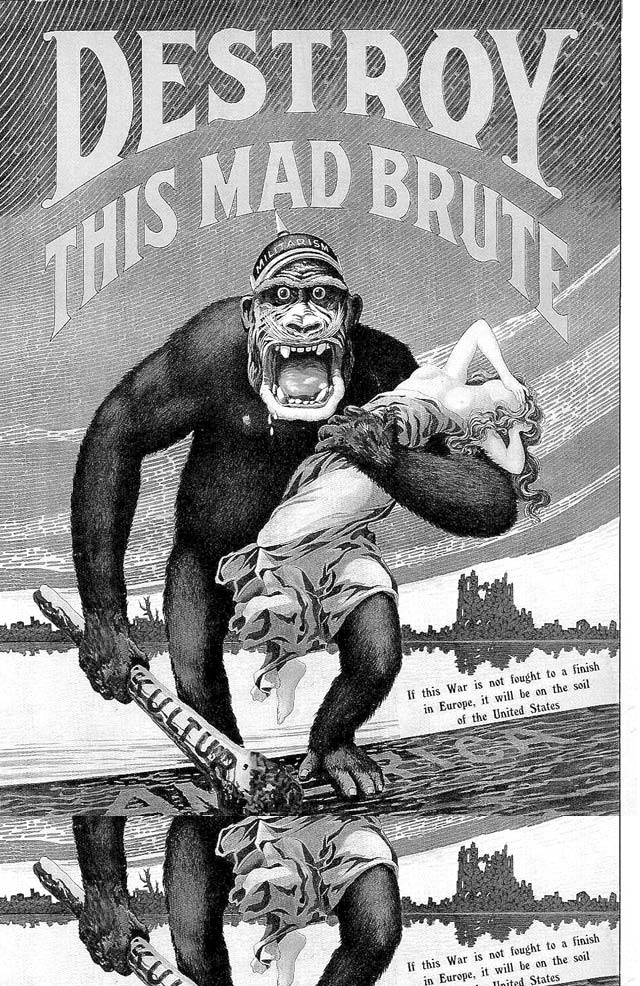
click picture above to enlarge it
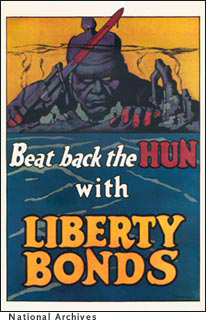
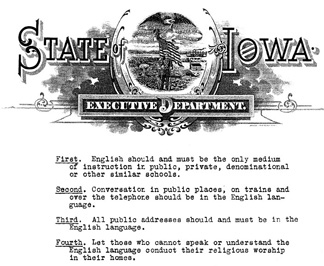
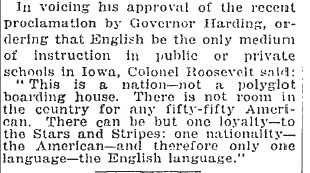
Former President Theodore Roosevelt popularized the phrase "hyphenated American"
See Fischer, William B., "'Cleansing' German-American Culture", The Oregonian, November 8, 2008.
Some print resources:
Neillands, Robin. The Great War Generals on the Western Front 1914-18. Claims that the generals were not as negligent and wasteful of life as commonly believed.
Clay, Catrine. King, Kaiser, Tsar: The Royal Cousins Who Led the World to War. WWI sovereigns of UK, Germany, Russia - close kin.
Bell, David A. The First Total War: Napoleon’s Europe and the Birth of Warfare as We Know It. Focus is Napoleonic wars, but it's a good introduction to mass modern warfare.